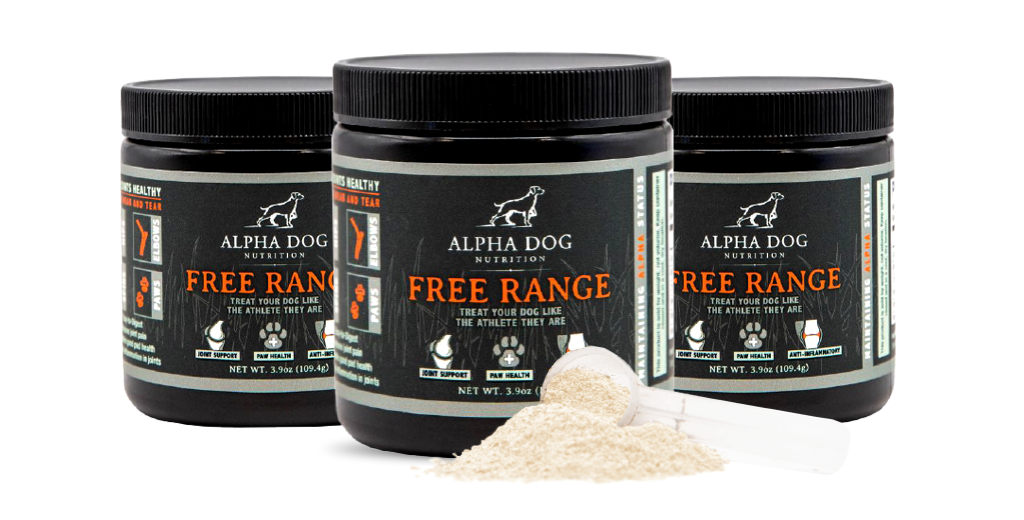Hip dysplasia is a common and often painful condition in large dog breeds, especially German Shepherds.
This genetic disorder occurs when the hip joint does not develop properly, causing the ball and socket to become misaligned.
Over time, this can lead to arthritis, pain, and reduced mobility.
Early detection and treatment are essential to managing the condition and improving your dog’s quality of life.
In this blog, we’ll explore five ways to support your German Shepherd if they have hip dysplasia and help them lead a more comfortable life.
Let’s dive in!
What Causes Hip Dysplasia in German Shepherds?
Hip dysplasia is primarily caused by genetics, meaning it often runs in families. However, other factors can contribute to the condition:
- Genetics: Hip dysplasia is inherited, and German Shepherds are one of the breeds most affected by it.
- Rapid Growth: Fast-growing puppies, especially those fed a diet high in calories and protein, are at an increased risk of developing hip dysplasia.
- Obesity: Excess weight puts additional strain on the joints, which can worsen hip dysplasia symptoms.
- Environmental Factors: High-impact activities or an improper diet during puppyhood can contribute to joint issues.
Here are five effective ways to support your German Shepherd with hip dysplasia and ease the discomfort associated with this condition.
5 Ways to Support German Shepherd Hip Dysplasia
1. Use a Joint Powder Supplement for Dogs
A joint powder supplement is a great way to provide your German Shepherd with the nutrients they need to support healthy hips and joints.
Supplements containing glucosamine, chondroitin, and MSM can help reduce inflammation, improve joint lubrication, and repair cartilage.
Joint powder supplements are especially beneficial for dogs with hip dysplasia, as they help support the joint structures and reduce pain.
Out of all the joint supplements my dog has tried, Alpha Dog’s Free Range Joint Powder is his personal favorite.
Alpha Dog’s Free Range Joint Powder is a fantastic supplement for managing hip dysplasia in German Shepherds, providing essential joint support with ingredients like glucosamine, chondroitin, and MSM.
These premium ingredients help reduce inflammation, repair cartilage, and promote healthy joint function, easing pain and discomfort.
With added vitamin E and real beef liver powder for flavor, this supplement is not only effective but also enjoyable for your dog.
Simply follow the directions on the back and you’re good to go!
2. Maintain a Healthy Weight
Maintaining a healthy weight is crucial for dogs with hip dysplasia.
Excess weight places added strain on the hip joints, which can exacerbate pain and discomfort.
Keeping your German Shepherd at a healthy weight will help reduce the stress on their joints and improve their overall mobility.
Work with your veterinarian to determine the appropriate amount of food and exercise for your dog.
Regular exercise and a balanced diet can help maintain a healthy weight and alleviate some of the pressure on your dog’s hips.
3. Regular Low-Impact Exercise
While it’s important to avoid high-impact activities that can aggravate hip dysplasia, regular low-impact exercise is essential for maintaining muscle strength and joint mobility.
Activities such as swimming, short walks, and gentle playtime can help keep your German Shepherd active without putting undue stress on their hips.
Building muscle around the hip joint can help stabilize it, reducing pain and improving mobility. Consult your vet for advice on the best types of exercise for your dog’s condition.
4. Provide Joint-Friendly Bedding
Dogs with hip dysplasia can experience more pain when lying on hard or uncomfortable surfaces.
Providing your German Shepherd with a soft, orthopedic bed designed to support their joints can help them get better rest and alleviate discomfort.
Look for beds made with memory foam or other supportive materials that conform to your dog’s body.
This will help cushion their joints and provide relief, especially during long periods of rest.
5. Consider Physical Therapy or Acupuncture
Physical therapy and acupuncture are becoming increasingly popular treatments for dogs with hip dysplasia.
Physical therapy can help improve joint function, increase muscle strength, and reduce pain by using targeted exercises and stretches.
Acupuncture can provide pain relief and reduce inflammation by stimulating specific points on the body.
Both treatments should be performed by a professional and can be a great complement to other forms of treatment for hip dysplasia.
Supporting German Shepherd Hip Dysplasia
Hip dysplasia is a challenging condition for both dogs and their owners, but with the right management, you can significantly improve your German Shepherd’s quality of life.
By using a joint powder supplement, maintaining a healthy weight, providing low-impact exercise, offering joint-friendly bedding, and considering therapies like physical therapy or acupuncture, you can help ease your dog’s discomfort and keep them active.
Always consult with your veterinarian to determine the best course of action for your dog’s specific needs and ensure they are getting the appropriate care for their condition.
With the right support, your German Shepherd can lead a happy, comfortable life despite hip dysplasia.
Thank you for reading!
Affiliate Disclosure
Some of the links on this site are affiliate links. This means that if you click on the link and purchase the item, we may receive an affiliate commission at no extra cost to you. I only recommend products or services that I believe will add value to my readers, however some (not all) do pay us to be on this blog. Your support and theirs helps keep this blog running, and I genuinely appreciate it.
Medical Disclaimer
The information provided on this website is for educational purposes only and is not intended as medical advice. The content shared here is not written by a licensed veterinarian, and it should not be used as a substitute for professional veterinary diagnosis, treatment, or advice. Always consult with your veterinarian or other qualified pet healthcare provider before starting any new treatment or making changes to your pet’s health regimen.

